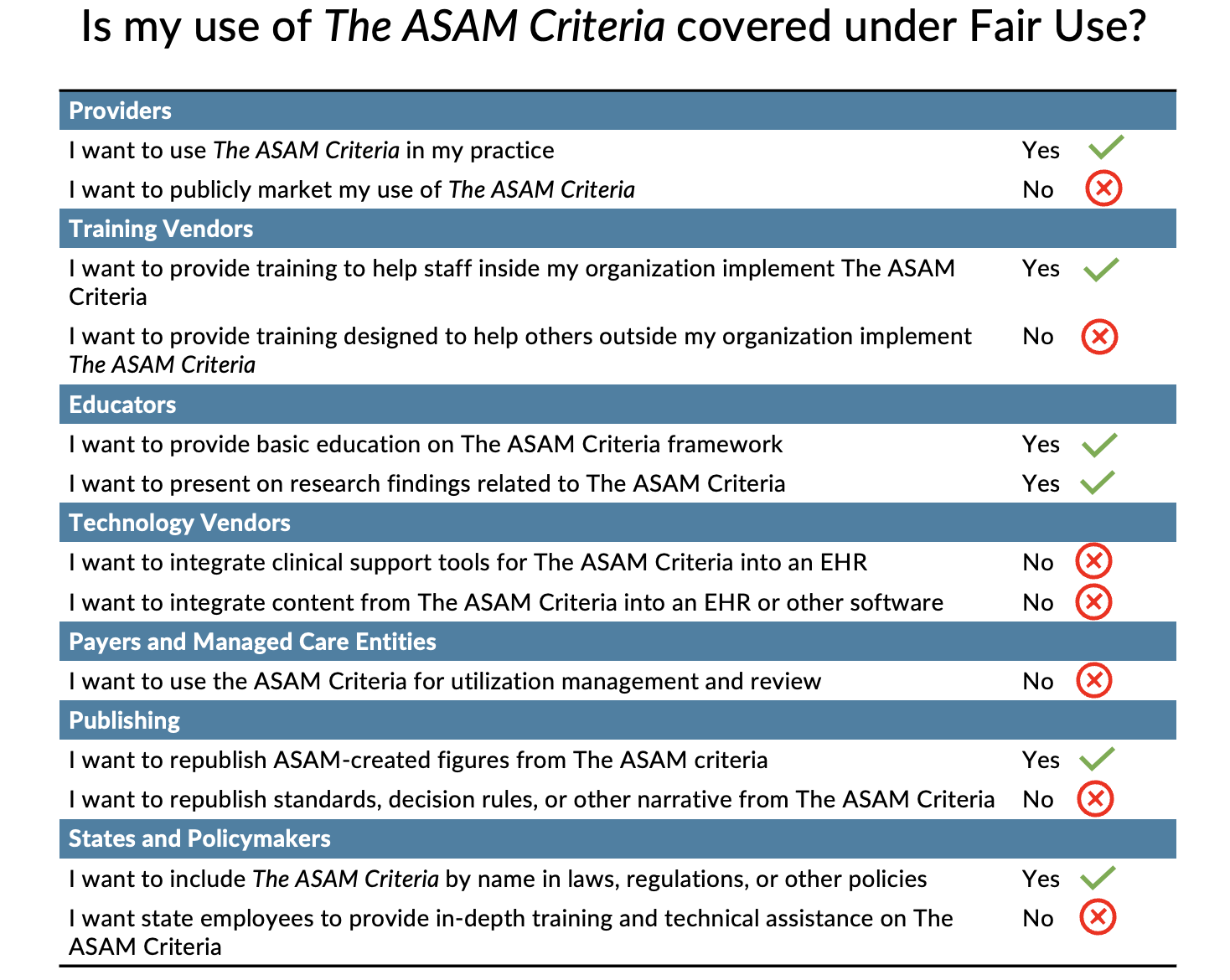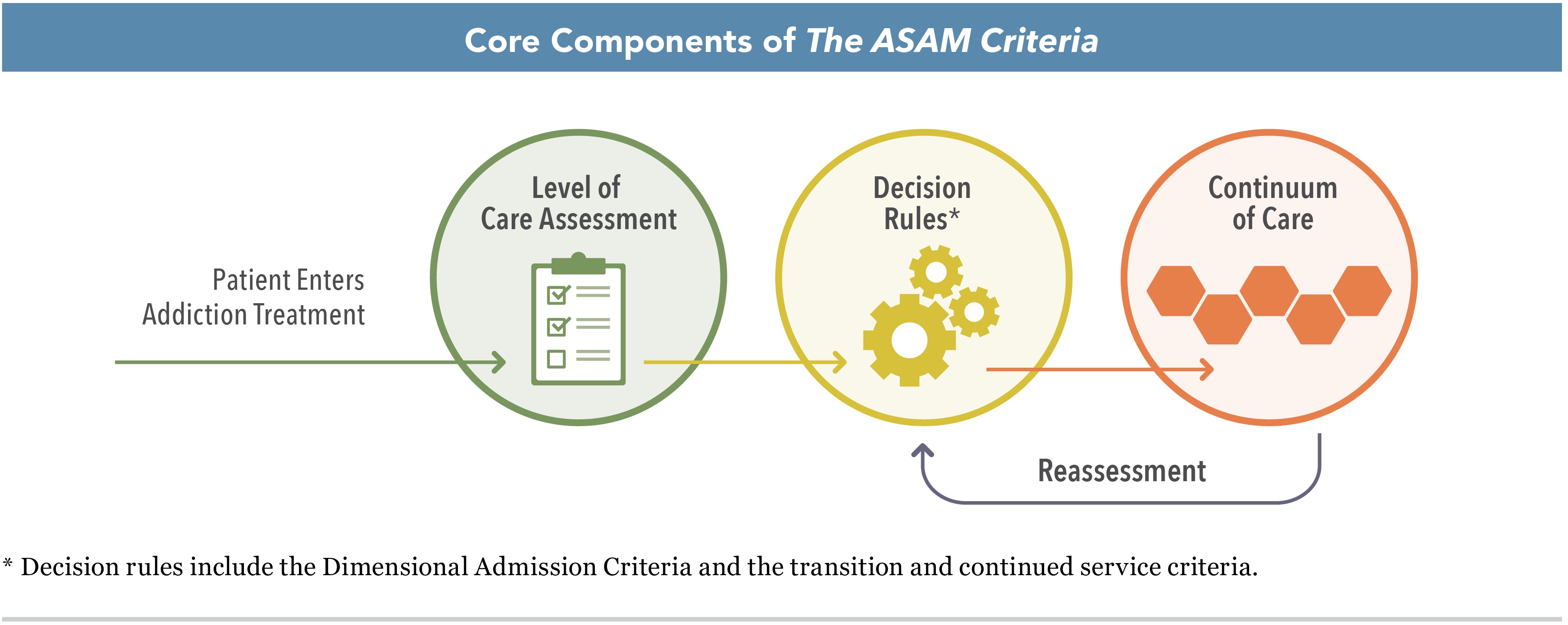The 3rd
Edition of The ASAM Criteria includes a framework for rating risks in each
dimension as well as dimensional admission criteria for each level of care.
However, the dimensional admission criteria do not reference the risk ratings.
The 4th Edition integrates risk ratings into the Dimensional Admission
Criteria with a goal of making the decision rules easier to understand and follow
reproducibly.
The Dimensional Admission
Criteria are designed to identify the least intensive level of care where a
patient can be safely and effectively treated. Risk ratings within each
subdimension indicate the minimum level of care at which the patient should be
treated to address needs in that subdimension. Risk ratings may indicate a
minimum level of care or services provided in addition to or within the
recommended level of care (eg, EVAL for prompt medical evaluation).
To make an initial
recommendation, the assessor will determine the risk rating for each
subdimension based on the associated descriptions of clinical presentation. After
determining the subdimensional Risk Ratings, the assessor applies the
integrated Level of Care Determination Rules across dimensions to arrive at the
clinically indicated – or recommended – level of care. The initial
recommendation is made based on Dimensions 1 to 5. After an initial
recommendation, the clinician engages in a shared decision-making process with
the patient to consider Dimension 6: Person-Centered Considerations and
determine where the patient is willing and able to engage in treatment.
For more information
on the Dimensional Admission Criteria, please see Chapter 10: Dimensional
Admission Criteria and Algorithm. Additionally, on-demand trainings are
available, and other resources can be downloaded for free from our
website.


